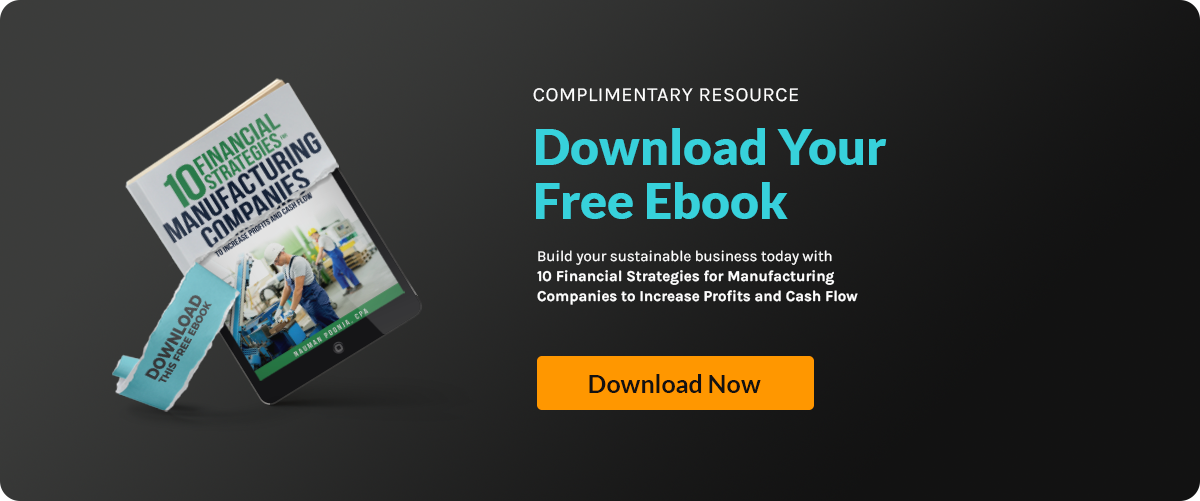Manufacturing companies face ongoing challenges in balancing efficient operations with sound...
Drive Manufacturing Results with Effective Capital Expenditure Planning

Feeling like your manufacturing business is running on a treadmill, putting in all the effort but getting nowhere fast?
It’s a common dilemma.
The secret sauce to jumping off that treadmill and sprinting toward success is effective capital expenditure planning.
This is the master key to unlocking your business’s potential. Think of it as planting seeds today for a bountiful harvest tomorrow. It’s about knowing where to invest your resources wisely to ensure growth, efficiency, and, ultimately, profitability. Without it, you’re just throwing darts in the dark, hoping to hit the bullseye.
Dive in and discover how mastering capital expenditure planning can turn your manufacturing efforts into a well-oiled profit machine.
What is Capital Expenditure Planning?
Capital expenditure planning in manufacturing involves the strategic budgeting and management of investments in long-term assets, such as machinery, equipment, and facilities. This planning process is critical for ensuring that capital assets are used efficiently and contribute to the company's growth and operational efficiency.
Unlike operational expenses, which cover day-to-day running costs, capital expenditures focus on long-term investments that yield significant returns. By carefully evaluating the potential return on investment and aligning these expenditures with the overall budget and strategic goals, manufacturers can enhance their operational capabilities and drive sustainable growth.
Virtual Strategies for Enhanced Efficiency and Profits
Virtual strategies can significantly enhance efficiency and profitability in manufacturing. By leveraging technology and innovative approaches, manufacturers can streamline their operations and optimize resource allocation.
Here are the 7 key strategies for improving efficiency and driving profits through virtual solutions.
#1. Implement Virtual Maintenance Programs
Utilizing virtual maintenance can reduce operational expenditures by predicting equipment failures before they happen. This approach helps allocate resources efficiently, ensuring high-cost machinery remains operational without unexpected downtimes.
#2. Adopt Cloud-Based Accounting Systems
Cloud-based systems simplify the accounting process, allowing real-time tracking of capital expenses and operational expenditures. This enhances the accuracy of the annual budget plan and improves cash flow management.
#3. Use Virtual Planning Tools
Virtual tools for planning and evaluation make the planning process more efficient. These tools can help companies assess ROI, payback periods, and the overall impact on the bottom line.
#4. Optimize Approval Processes
Streamlining the approval process through virtual platforms can expedite the allocation of funds used for business growth. This ensures that high-priority projects receive timely approval and implementation.
#5. Enhance Remote Collaboration
Virtual collaboration tools enable teams to work together seamlessly, regardless of location. This improves decision-making processes related to capital expenses and operational efficiencies.
#6. Integrate Virtual Training Programs
Implementing virtual training for staff ensures that everyone is up-to-date with the latest technologies and best practices. This is imperative for maintaining productivity and optimizing day-to-day operations.
#7. Monitor Cash Flow Virtually
Using virtual dashboards to monitor cash flow and budget plans helps companies budget more effectively. This ensures that money spent to purchase capital assets is tracked accurately, supporting long-term financial stability.
Importance of Clear Financial Reporting
Clear financial reporting is crucial for making informed decisions in manufacturing. It provides transparency and helps stakeholders understand the financial implications and benefits of various initiatives. Here are 5 reasons why clear financial reporting is important.
Enhance Decision-Making
Clear financial reports maximize the understanding of cash inflows and outflows. This allows managers to make informed decisions and avoid situations where finances could spiral out of control.
Support Capital Budgeting
Detailed financial reports are essential in the capital budgeting process. They help assess the viability of investments by showing the financial implications and benefits over years, even decades.
Set and Meet Hurdle Rates
Financial reporting helps set appropriate hurdle rates for investments. These rates are critical for determining which projects meet the required return objective and should be pursued.
Improve Workflow Efficiency
Clear financial reporting enhances workflow by providing a structured, bottom-up approach to financial management. This ensures that all financial data is captured accurately and used appropriately in the planning process.
Maintain Financial Health
Regular and clear financial reporting helps maintain the overall financial health of the company. It ensures that the company’s finances are tracked separately and meticulously, preventing any issues that could affect long-term stability.
Financial Insights for Boosting Returns
Financial insights play a pivotal role in maximizing returns and achieving manufacturing success. By leveraging detailed financial analysis, manufacturers can make informed decisions that enhance profitability.
Here's how to use financial insights to boost returns.
Standardize Financial Reporting
Standardizing financial reporting across different departments ensures consistency and accuracy. This practice helps in the planning process, often leading to more reliable data for making strategic decisions.
Prioritize Investments
Use financial insights to prioritize investments that offer the highest returns. Calculating potential ROI and evaluating the impact on physical assets helps allocate resources effectively and gain a competitive edge.
Integrate Departmental Data
Combining financial data from different departments provides a comprehensive view of the business’s financial health. This integration helps identify areas for improvement and ensures that all departments work towards common financial goals.
Evaluate and Adjust Strategies
Regularly evaluating financial insights allows businesses to adjust their strategies in response to changing market conditions. This flexibility helps maintain a competitive edge and ensures long-term profitability.
Integrating Key Elements for Sustainable Growth
Achieving sustainable growth in manufacturing involves integrating several key elements into your strategic planning. By focusing on these critical areas, businesses can ensure long-term stability and success.
Here are 5 essential components for sustainable growth.
Prioritize Long-Term Goals
Make it a priority to set and focus on long-term goals. This ensures that your investments and strategies are aligned with your vision for the future.
Streamline Budgeting Processes
Efficient budgeting processes are crucial. Regularly updating and optimizing your budget helps allocate resources effectively and respond to market changes.
Incorporate Financial Metrics
Include detailed financial metrics in your planning process. This allows you to track progress, identify areas for improvement, and make informed decisions.
Invest in Innovation
Innovation should be a key priority. Investing in new technologies and processes can improve efficiency and drive growth.
Develop Comprehensive Plans
Create comprehensive plans that cover all aspects of your operations. This should also include financial planning, resource allocation, and market expansion strategies.
Drive Manufacturing Success—Partner with Accounovation for Effective Capital Expenditure Planning
Effective planning is the backbone of a thriving manufacturing business. It's not just about spending money; it's about making smart investments that drive growth and maximize returns. When you have a solid plan in place, you can turn every dollar into a stepping stone toward greater success.
At Accounovation, we specialize in helping manufacturers develop robust capital expenditure plans. Our expertise ensures your investments are strategic, cost-effective, and aligned with your long-term goals.
Ready to transform your manufacturing business? Contact Accounovation today and let's chart a path to success together!







